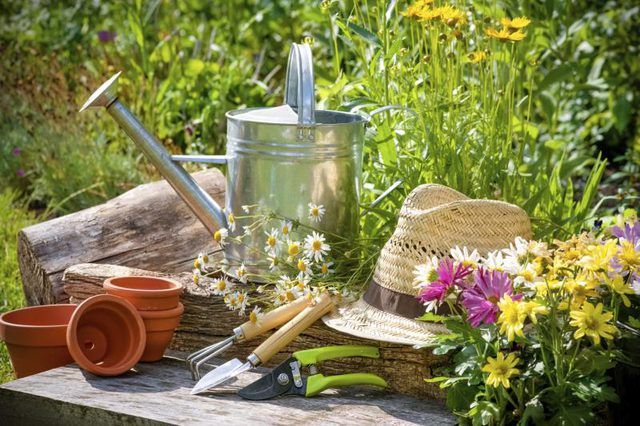Bulbs
Flower Basics
Flower Beds & Specialty Gardens
Flower Garden
Garden Furniture
Garden Gnomes
Garden Seeds
Garden Sheds
Garden Statues
Garden Tools & Supplies
Gardening Basics
Green & Organic
Groundcovers & Vines
Growing Annuals
Growing Basil
Growing Beans
Growing Berries
Growing Blueberries
Growing Cactus
Growing Corn
Growing Cotton
Growing Edibles
Growing Flowers
Growing Garlic
Growing Grapes
Growing Grass
Growing Herbs
Growing Jasmine
Growing Mint
Growing Mushrooms
Orchids
Growing Peanuts
Growing Perennials
Growing Plants
Growing Rosemary
Growing Roses
Growing Strawberries
Growing Sunflowers
Growing Thyme
Growing Tomatoes
Growing Tulips
Growing Vegetables
Herb Basics
Herb Garden
Indoor Growing
Landscaping Basics
Landscaping Patios
Landscaping Plants
Landscaping Shrubs
Landscaping Trees
Landscaping Walks & Pathways
Lawn Basics
Lawn Maintenance
Lawn Mowers
Lawn Ornaments
Lawn Planting
Lawn Tools
Outdoor Growing
Overall Landscape Planning
Pests, Weeds & Problems
Plant Basics
Rock Garden
Rose Garden
Shrubs
Soil
Specialty Gardens
Trees
Vegetable Garden
Yard Maintenance
Perennials That Bloom All Spring and Summer
Perennials That Bloom All Spring and Summer. Unlike annual flowers, which live only a single year, **flowering perennials bring your garden color again and again**. Some perennials bloom for only a few weeks, so savvy gardeners stagger them through flower borders for ever-changing floral displays. However, not all perennials limit their flowers to...
Unlike annual flowers, which live only a single year, flowering perennials bring your garden color again and again. Some perennials bloom for only a few weeks, so savvy gardeners stagger them through flower borders for ever-changing floral displays. However, not all perennials limit their flowers to weeks or single seasons. Some keep producing month after month -- and add more than just blooms. With versatile, long-blooming perennials as your garden's foundation, you'll be treated to beauty all season long.
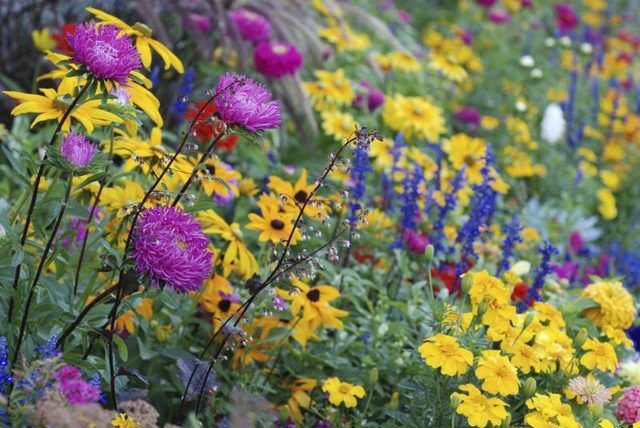
Plant at least one long-blooming perennial right at your garden's front, and blooms will greet your every glance. "Blue Wonder" catmint (Nepeta racemosa "Blue Wonder") edges borders with dark blue blossoms from spring into fall. Best suited to U.S. Department of Agriculture plant hardiness zones 3 through 8, the silver-leaved, 12-inch mounds add texture and aroma, too.
The easygoing "Butterfly Blue" pincushion flower (Scabiosa columbaria "Butterfly Blue," USDA zones 3 through 9) forms a gray-green rosette just 6 to 8 inches high, but then sends out 12- to 15-inch stems with flowers that dance on breezes from late spring into autumn. As the name implies, the pincushion-like blue blooms seldom lack visiting butterflies.
For early season leaf color and long-lasting blossoms, "Vera Jameson" stonecrop (Hylotelephium "Vera Jameson," USDA zones 3 through 9), offers dusky, desert-rose flowers from early summer well into fall. Even with blooms absent, the 9- to 12-inch-tall plants delight with thick, succulent leaves in tints of teal, burgundy and purple.
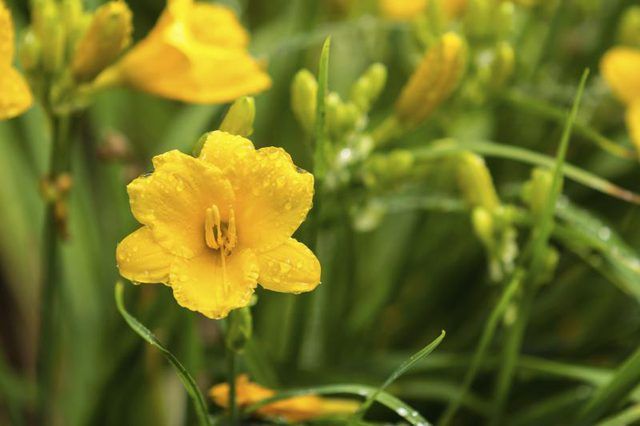
Big, violet-blue blossoms are always welcome, especially when they run from spring to fall. "Rozanne" cranesbill (Geranium "Rozanne," USDA zones 5 through 8) grows up to 2 feet high and 3 feet wide, as it fills whatever spot it's given. Striking violet-blue blooms crown a mound of deep-green leaves with hints of chartreuse. Cool autumn temperatures turn leaves scarlet red.
"Goldsturm" black-eyed Susan (Rudbeckia fulgida var. sullivantii "Goldsturm," USDA zones 3 through 9) evokes memories of wildflower meadows. Golden-yellow blooms extend from early to mid-summer into fall on plants 24 to 36 inches tall. Left standing into winter atop blackened stems, the black seed heads that were Susan's eyes treat hungry birds to winter snacks.
Brilliant-orange blooms of butterfly weed (Asclepias tuberosa, USDA zones 3 through 9) don't show up until late spring or early summer; the plant takes its time emerging. But after flowers arrive, the vibrant blossoms linger into fall. Monarch butterflies come with the territory for this long-blooming perennial, a food source for adult monarchs and their caterpillars.
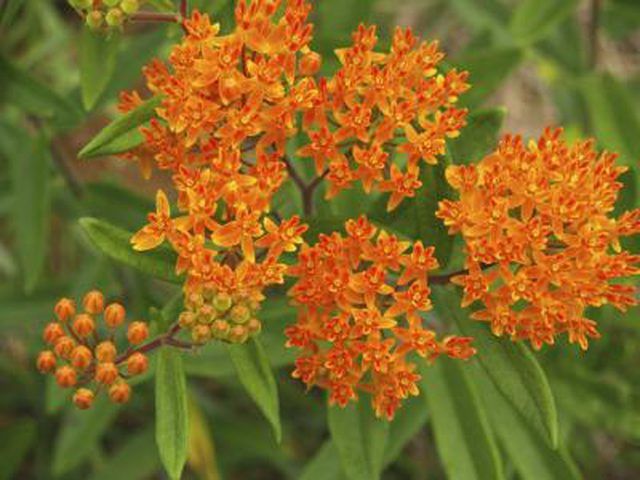
At up to 4 feet tall and wide, the crimson cloud of "Firetail" mountain fleece (Persicaria amplexicaulis "Firetail," USDA zones 4 through 7) anchors rear-border spots. The plant bears large, intriguing leaves and masses of 6-inch, bottlebrush-like, red blooms from early spring until frost.
Tall, sturdy "Magnus" purple coneflower (Echinacea purpurea "Magnus," USDA zones 3 through 8) delivers flower heads of intense purple-pink with rusty-bronze cones. Reaching 3 to 4 feet tall, the plant's long-lasting blooms continue from early summer until fall and seeds delight birds long after petals fall.
Back-of-the-border stalwart Russian sage (Perovskia atriplicifolia, USDA 3 through 8) forms a lavender-blue floral wall from early summer into autumn. At 4 feet tall or taller, the silvery stems carry fragrant, silver-green leaves, and flower spikes dry beautifully for bouquets. Leave Russian sage standing at season's end for wintry, off-season beauty.
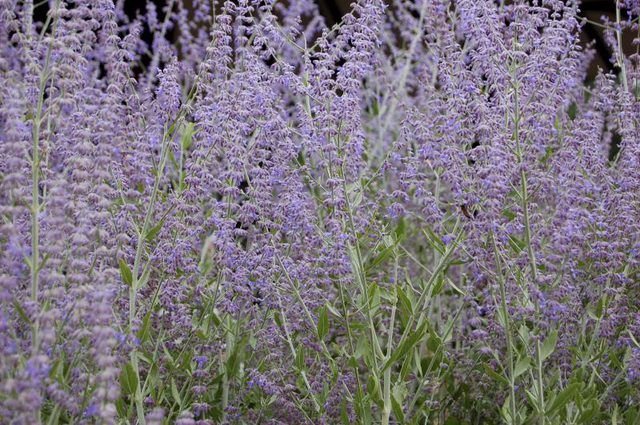
Proper care helps long-blooming perennials deliver on their natural promise. Always choose plants suited to your USDA growing zones, and provide the conditions and care your perennials need.
Most blooming perennials flower best in well-draining soil and full-sun locations that receive at least six to eight hours of direct sun each day. Sunlight fuels flower blossoms, but in hot climates, filtered shade keeps colors from fading. Find the balance your plants and climate require. Left intact, wilted flowers signal perennials to stop blooming and set seeds instead. Remove spent flowers regularly to keep blooms coming.
Avoid high-nitrogen fertilizers, including lawn fertilizer, near your long-flowering perennials. High nitrogen encourages green, leafy growth at the expense of blooms. Some mature perennials become overcrowded after approximately three years, and flowers become smaller and fewer. Dividing and transplanting restores normal blooms.
